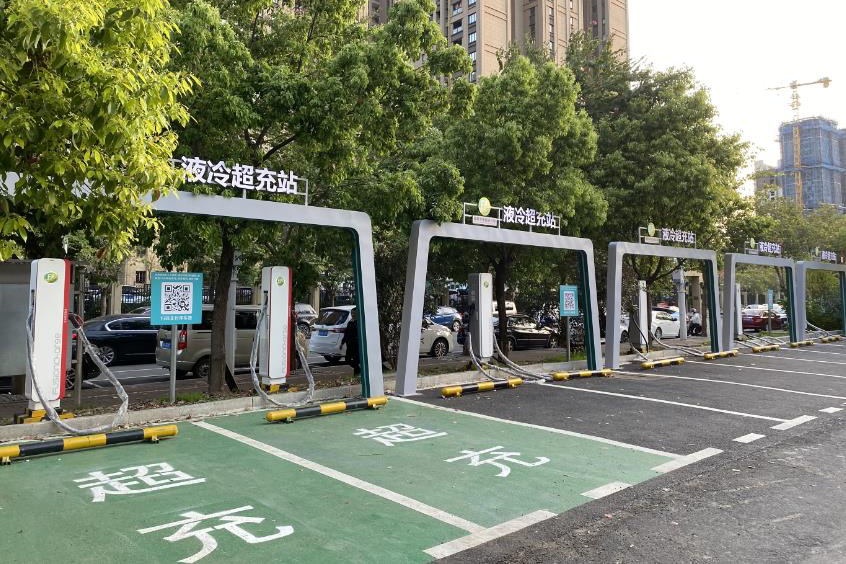Huawei has another black technology. Huawei Digital Energy, a subsidiary of Huawei, announced that during the National Day, the Tianquan service area overcharging station built with the help of Huawei Digital Energy along the Sichuan-Tibet Southern Line and Litang-Aden Highway (Sichuan Section) , Litang Kangnan Tourism Distribution Center Overcharging Station, and Sangdui Service Area Overcharging Station were officially launched. These are fully liquid-cooled supercharging stations, claiming a cruising range of 1 km in 1 second of charging.
The Paper reports that according to Huawei, the fully liquid-cooled supercharging station has three major features: first, charging is faster and can achieve “one kilometer per second”. The maximum output power of the fully liquid-cooled supercharging terminal is 600kW and the maximum current is 600A.Secondly, the equipment has high reliability and long service life. Full liquid cooling technology ensures high reliability of the equipment and achieves durability in plateau areas.high temperature, resistant to high humidity, dustproof, anti-corrosion, etc., and adaptable to various complex working conditions along the line. Third, it matches all car models and can be charged as soon as the car arrives. The one-time charging success rate is as high as 99%, and the 200-1000V charging range matches all models, including passenger cars such as Tesla, Xpeng, and Lili, and commercial vehicles such as Lalamove.
The outside world didn’t know much about Huawei’s liquid-cooled charging station technology and products before. In May this year, He Bo, president of Huawei’s digital energy critical power supply and charging network product line, unveiled a new generation of fully liquid-cooled supercharging architecture in Shanghai, with a maximum power of 720kW in a single cabinet.
It is understood that Huawei’s liquid-cooled charging stations are not limited to the southern Sichuan-Tibet line. Huawei and its partners have deployed more than 200 fully liquid-cooled ultra-fast charging model stations in more than 50 cities and more than 20 highways across the mainland.
Huawei only provides technology and products in the charging industry chain. It does not operate the charging network itself, but leaves it to the power grid or professional charging companies to operate it.
Hou Jinlong, President of Huawei Digital Energy Technology Co., Ltd., said at the 2023 Huawei China Digital Energy Flagship Summit held in September this year that there are two major trends in the future: First, in the fields of materials, devices, batteries, vehicles, etc., high-power, high-voltage Fast charging technology has matured, and the energy replenishment speed of “one kilometer per second” has made charging new energy vehicles a reality like refueling. Second, the coordinated development and rational layout of supercharging will greatly promote the rapid development of China’s new energy vehicle industry and will also be the key to China’s shift to high-quality development of new energy vehicles. With the breakthrough of overcharging technology, power grids and charging operators have begun to actively embrace and lay out this technical route. In the next 2-3 years, a large number of overcharging sites will be deployed, which will also maximize the solution to consumers’ range anxiety. problem, further accelerating the popularity of electric vehicles.
Huawei believes that it should take the lead in “urban public,Gas station、highway“Service Area” and other high-traffic, charge-and-go scenarios for electric vehicles, build ultra-fast charging networks, create one network for cities and one network for high-speeds, so that charging can be provided wherever there are roads, and 300-300 yuan of energy can be replenished in 10 minutes. 400 kilometers, completely eliminating range anxiety.
2023-10-09 14:07:28
#Huawei #black #technology #fully #liquid #cooling #supercharging #Lianhe #News #Network
